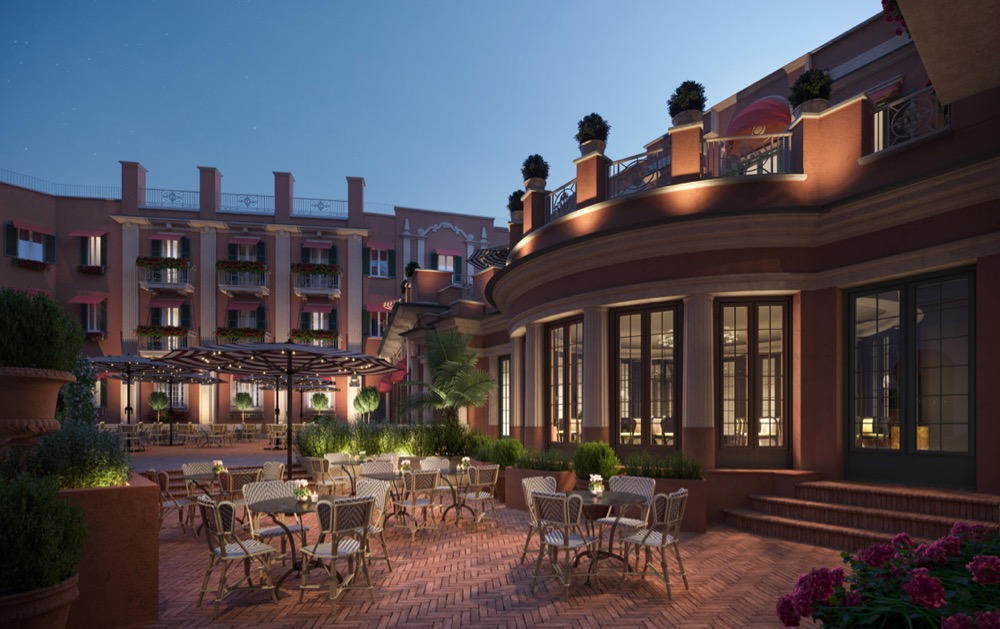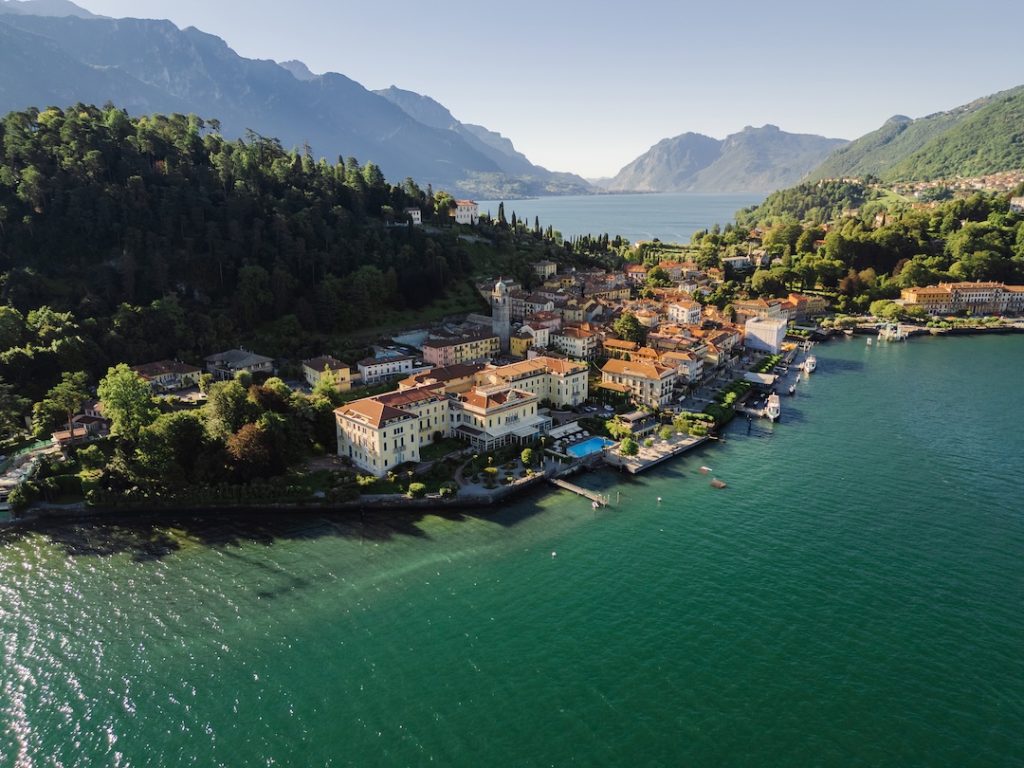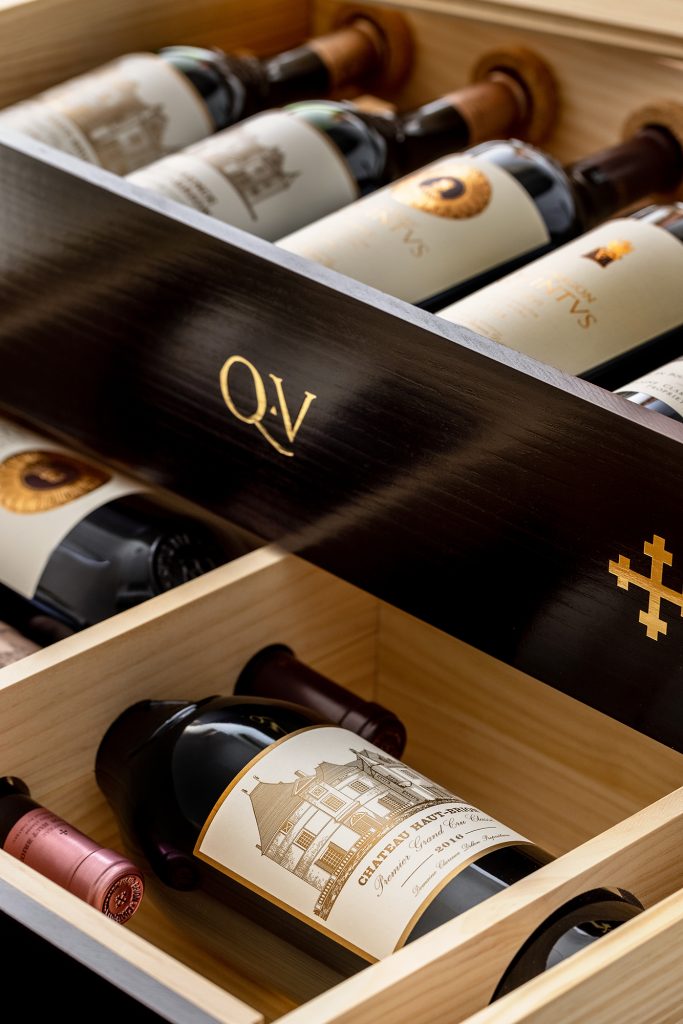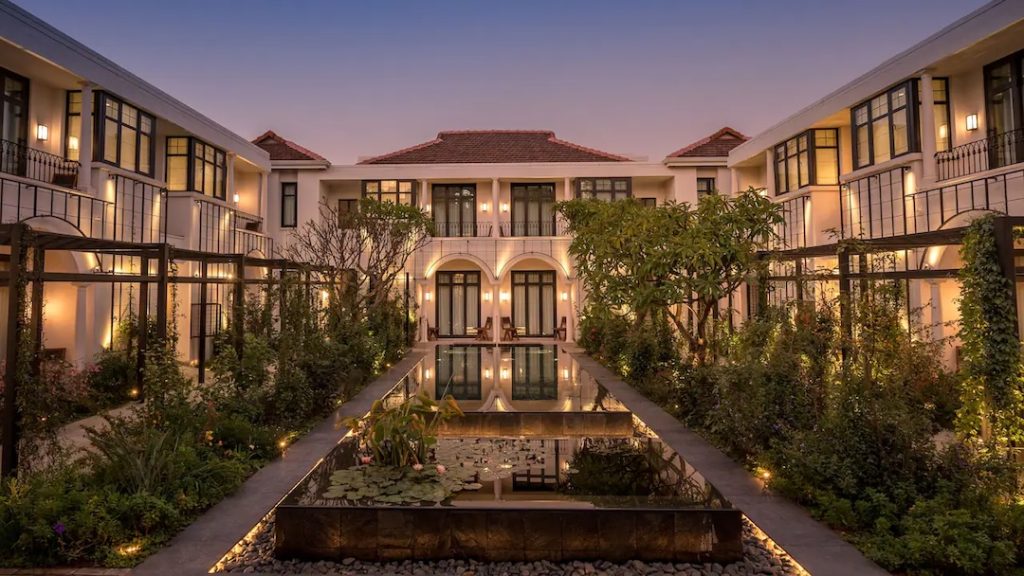Rocco Forte Hotels has unveiled the eclectic Grand Tour-inspired interiors at the luxury hospitality group’s newest property in Rome, Hotel de la Ville, designed by renowned Italian architect Tommaso Ziffer following his appointment by Olga Polizzi, Director of Design at Rocco Forte Hotels.
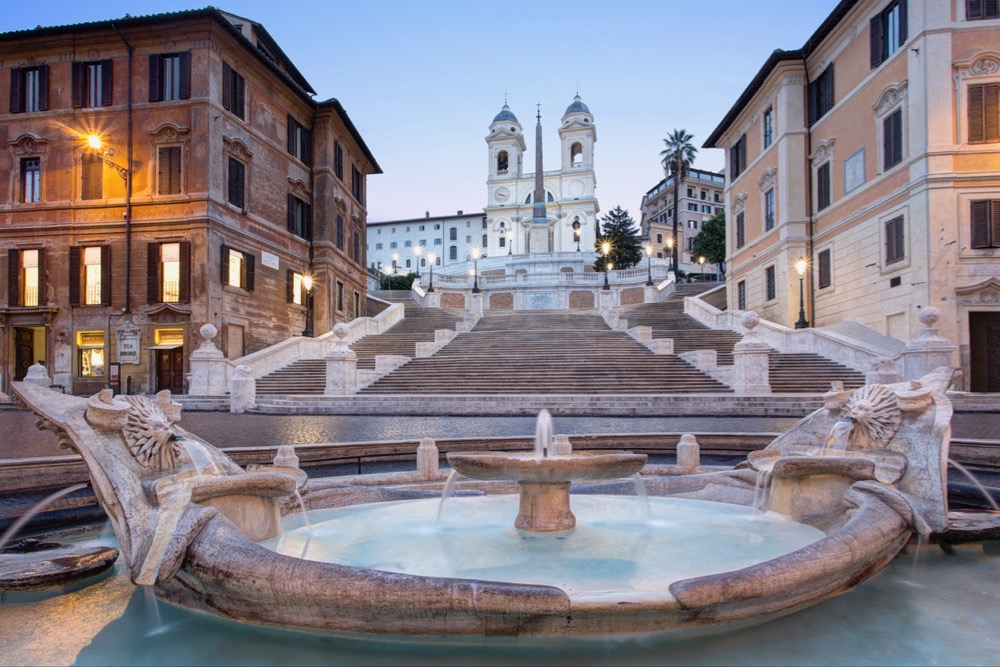
Inspired by The Grand Tour of the 18th and 19th Centuries, when English and German nobles journeyed to cities like Rome, Venice and Paris to learn about culture, architecture, food and the arts, Ziffer has created a thoughtful and contemporary retrospective to this lavish time in European history. Complementing the backdrop of the 18th Century palazzo atop the Spanish Steps, the interiors take guests on a playful voyage of their own, with a bold collection of precious materials, furnishings and unique decorative items.
Read our guide to the best luxury hotels in Rome
The extravagant style of the 18th Century is boldly weaved together with Ziffer’s contemporary touch. Handmade wallpaper from local designers Rubelli and Dedar, and rich Italian fabrics and tapestries from Zardi & Zardi sit alongside ‘antiquated’ design elements created using new technologies such as digitally printed mosaics and laser-cut wall coverings.
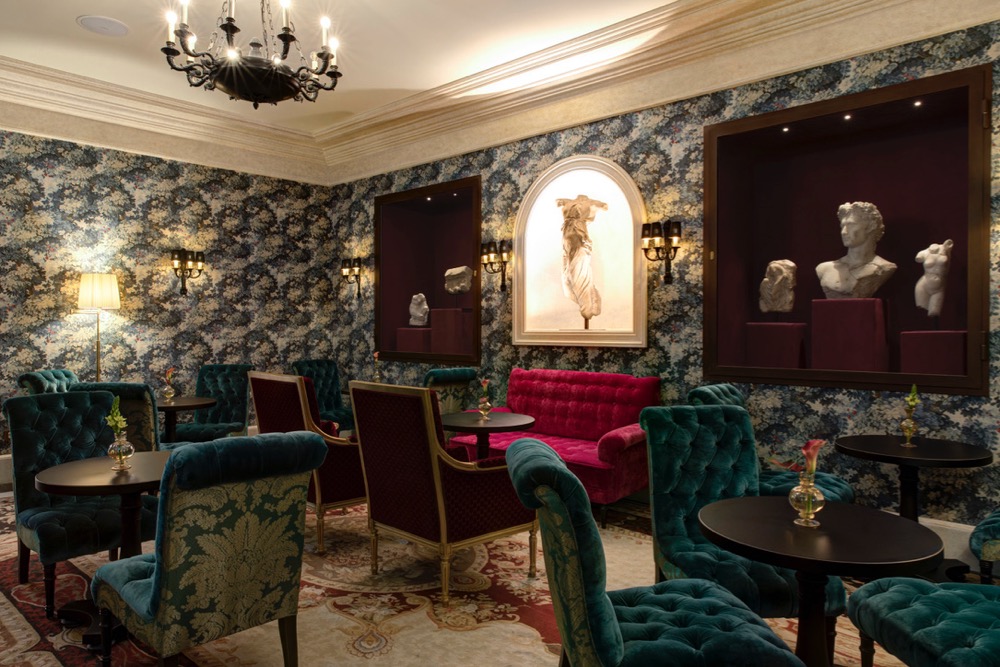
Having completed the design of Rocco Forte’s Hotel de Russie (Rome) in 2000, and Hotel de Rome (Berlin) in 2006, Ziffer is familiar with the Forte brand and Olga Polizzi’s overall design vision. On his newest Forte project, he said: “Hotel de la Ville is an overall dance of shapes and colours, a purposefully created poetic chaos, creating rooms that are works of art in their own right.”
Public Areas – Lobby, Lounge, Elevators
From the first step over the hotel’s threshold, the peculiar items integrated into the design that evoke the diverse feel of The Grand Tour, will capture guests’ attention. An imposing Roman marble trapezophorus, traditionally found in ancient Roman palazzos, stands in the place of a traditional Concierge desk, while the black and white geometric lobby floor, interwoven with handmade terracotta from Umbria, is reminiscent of typical monochrome flooring found in English mansions of the 18th and 19th Centuries, where the Grand Tourists would return to in order to install their new collections of antiquities. Light blue walls, embellished with stone columns and Roman ruins, and a set of mirroirs sorcières hanging across the passage to the staircase, bring the whimsical personality of the lobby to life.
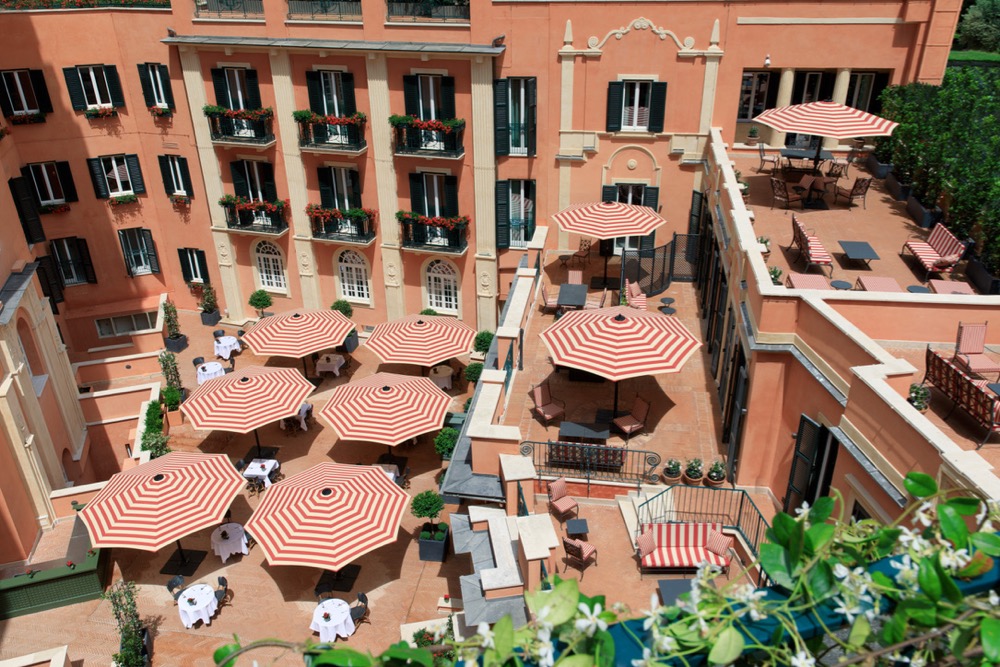
The striking black and white tile floors flow throughout Hotel de la Ville, with all main areas featuring diverse geometric patterns. Ziffer has interpreted the graphic shapes of Roman paving in a more refined manner, closely emulating the Neo-Classicism style that emerged in the mid-18th Century. The designer opted to substitute traditional marble with terracotta, partnering with Fornace Sugaroni, a company that has been producing handmade terracotta since 1865, to create the special black and white terracotta pigment for Hotel de la Ville.
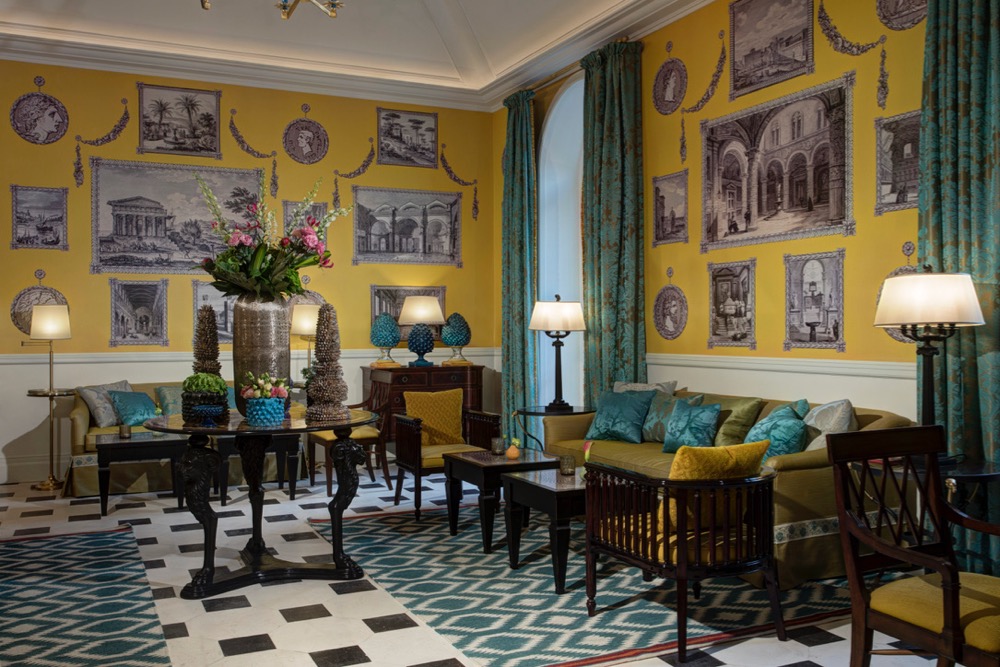
Located just off of the lobby, the hotel’s lounge ‘The Print Room’ is a Roman take on an English concept. Grand Tourists would hang prints to showcase the artwork they collected during their journey, and the lounge recreates this concept with memories of Roman antiquity digitally reproduced and exhibited on the walls. Classic designs of micro-mosaic jewellery, a typical souvenir for Grand Tourists, have also been printed digitally.
This appreciation for nuanced details extends to every corner of the hotel, including the elevators, which have become centrepieces in their own right. Paisley, green foliage, and studded leather patterns are printed on the glass screens, conceiving a modern tapestry that offers guests a visual feast whilst transporting them up and down the hotel’s seven storeys to the 104 rooms and suites, and beyond.
Guestrooms and Suites
The guestrooms and suites imagined by Ziffer represent pages from history, elegantly composed of soft and bright colours; rich fabrics and jewel tones; earthy elements; and a collection of items that are eclectic and symbolic of both the past and present.
Greek Neo-Classic geometry and Roman keys, two design elements present in Ancient Rome, feature on the studded mini bars and are worked into the plush velvet headboards of the beds. Luxuriant, handmade Indian wool bed throws add rich shades and texture to the bedrooms whilst showcasing the specially crafted paisley motif found throughout the hotel. Adjacent to the beds, Chinese vases pose as night-lights, making delicate reference to the famous ceramics of the 18th Century. Combined with the handsome Chinese dressers, these chinoiseries are a testament to the impression the Grand Tour had on architecture and design far beyond Europe.
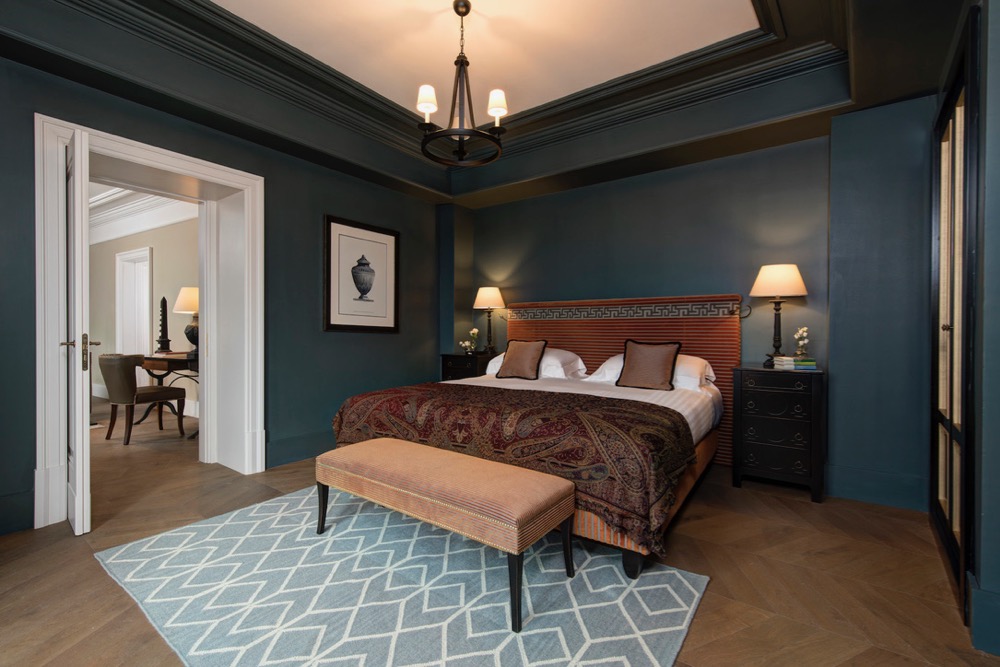
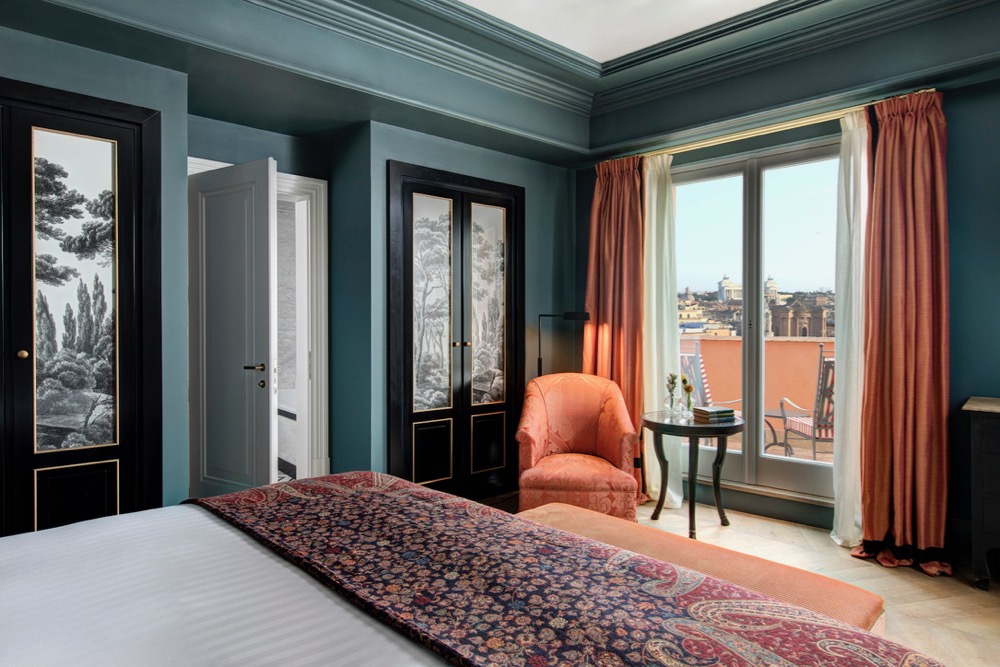
The bespoke wardrobes were also subject to Ziffer’s modern design approach, some featuring damask patterns achieved with a laser-cut wood inlay; others dressed with elaborate printed fabrics showing the panoramic scenes of Roman pine trees, in quiet homage to Italian artist Giovanni Battista Piranesi, a prominent figure known for his etchings of Rome during The Grand Tour era. Tommaso Ziffer had the same playful intention when creating modern expressions of classic art – Neoclassical profiles have been amplified thanks to digital printing, bringing the focus onto the large painted faces. Intricate and well-executed Roman mosaic graphics on the coffee and side tables have also been achieved by the same method of digital printing.
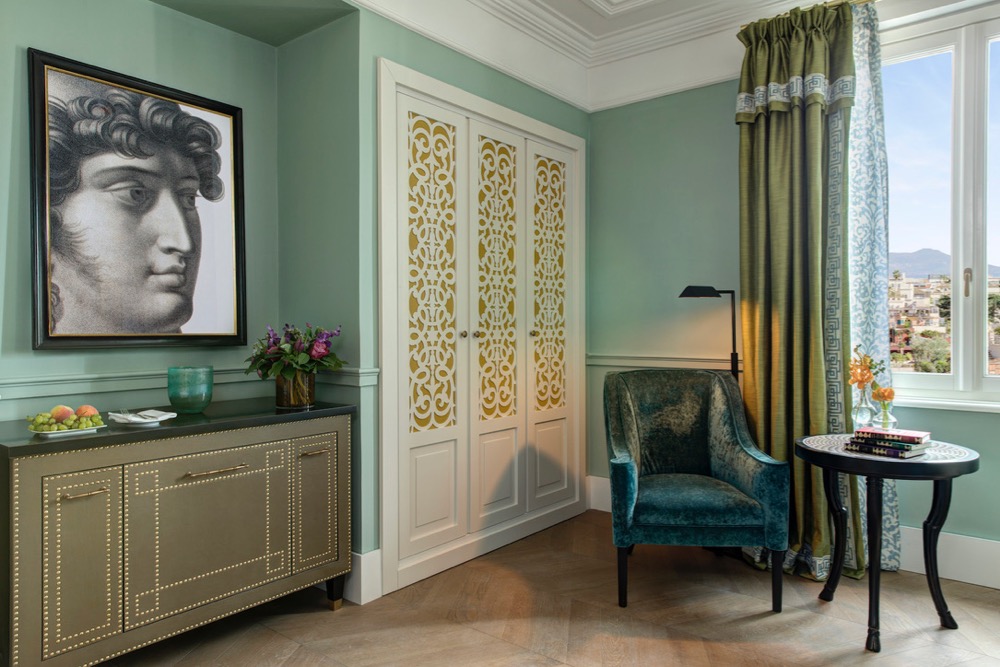
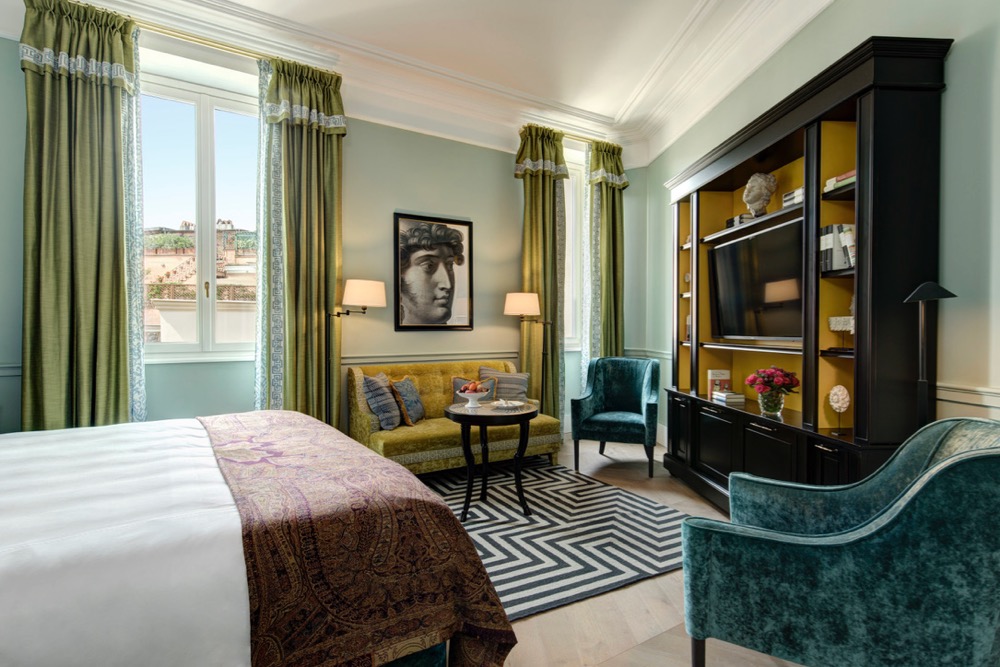
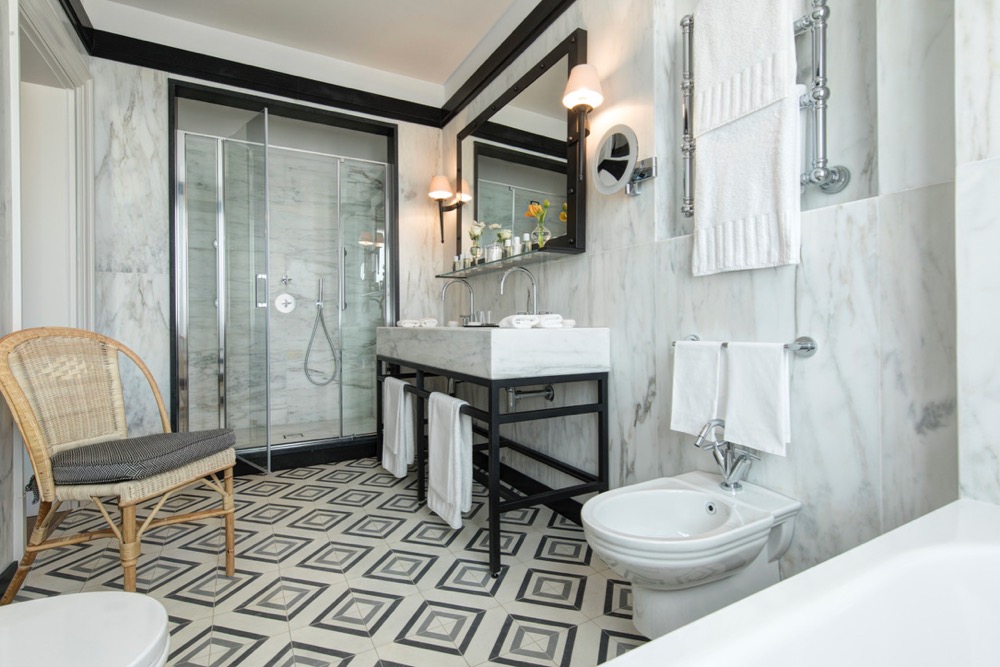
To create contrast with the soft colour palette of the rooms, jewel-toned sofas and armchairs sit on graphic black and white rugs, a tasteful nod to the terracotta tiles laced throughout the hotel. This bold, geometric motif also takes centre-stage in the bathrooms, with a mix of Cementine and various types of marble (including Calacatta and Statuario) coming together to fashion new, characterful patterns.
Suite de la Ville – Presidential Suite
The presidential suite, which proudly carries the hotel’s name, presents an evolution of design elements that culminate in a scene of Roman history. In the dining room guests find a modern replica of an antique aubusson rug, as well as upscale wall treatment and handmade wallpaper adorning the walls. This wallpaper continues into the living room, where once more, digital art is the protagonist with grand etudes of different classical portraits blown-up for a modern take on both the subjects and the art medium.
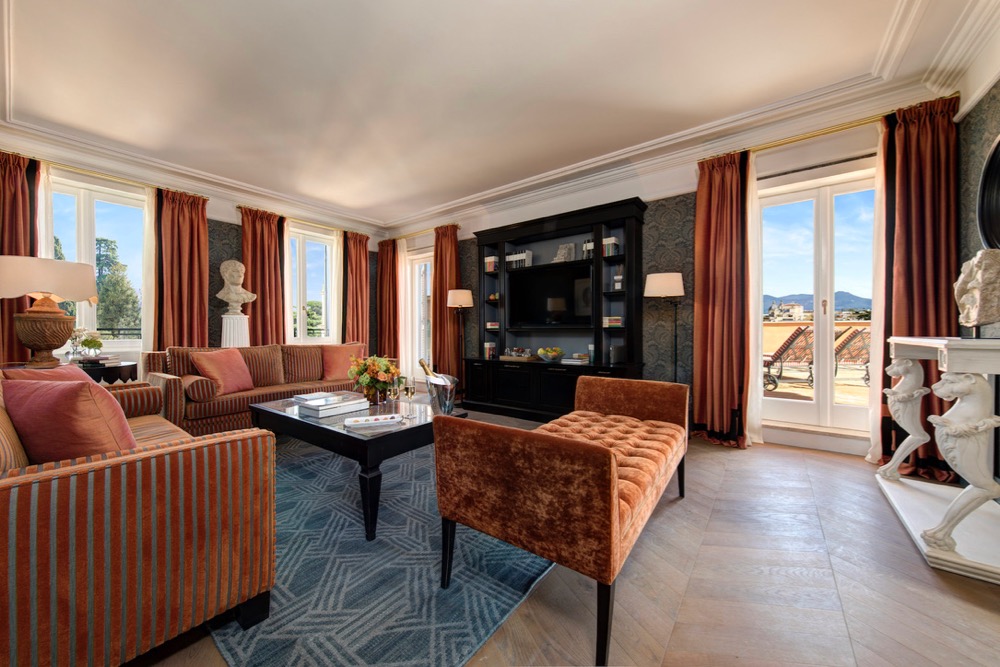
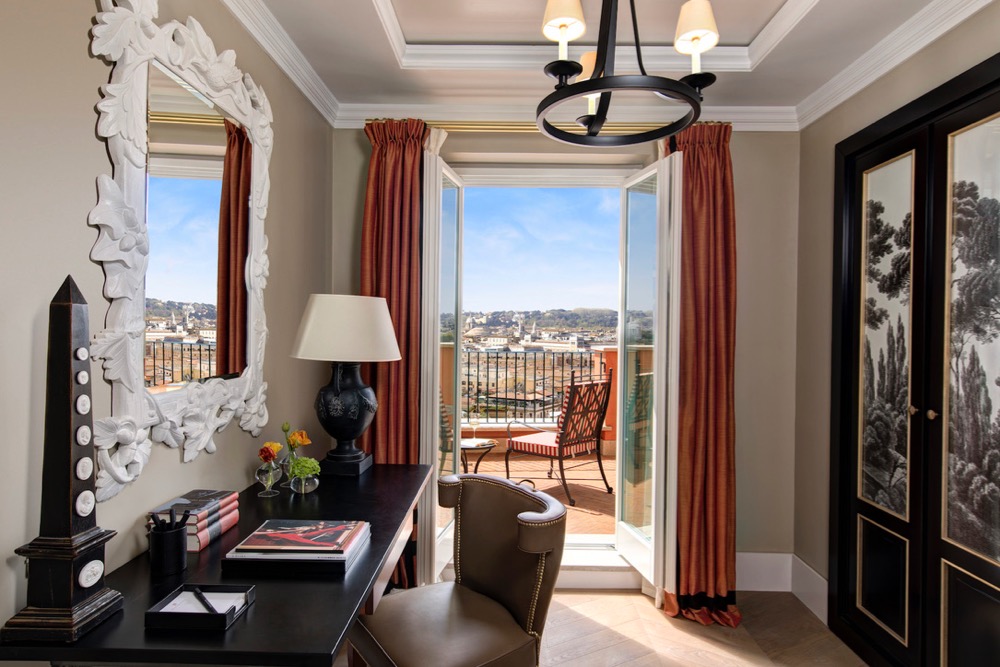
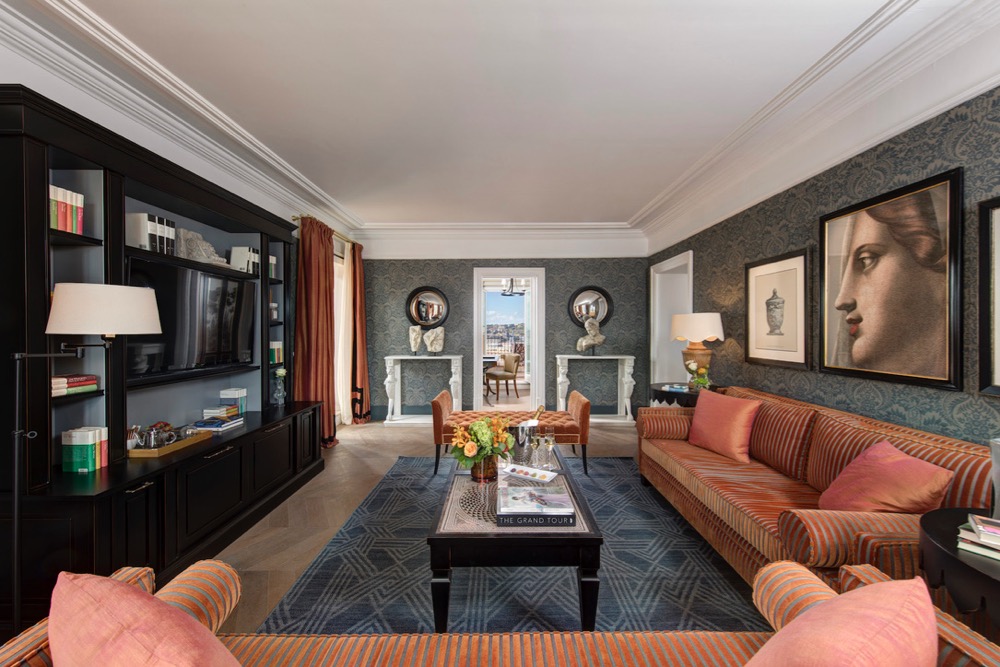
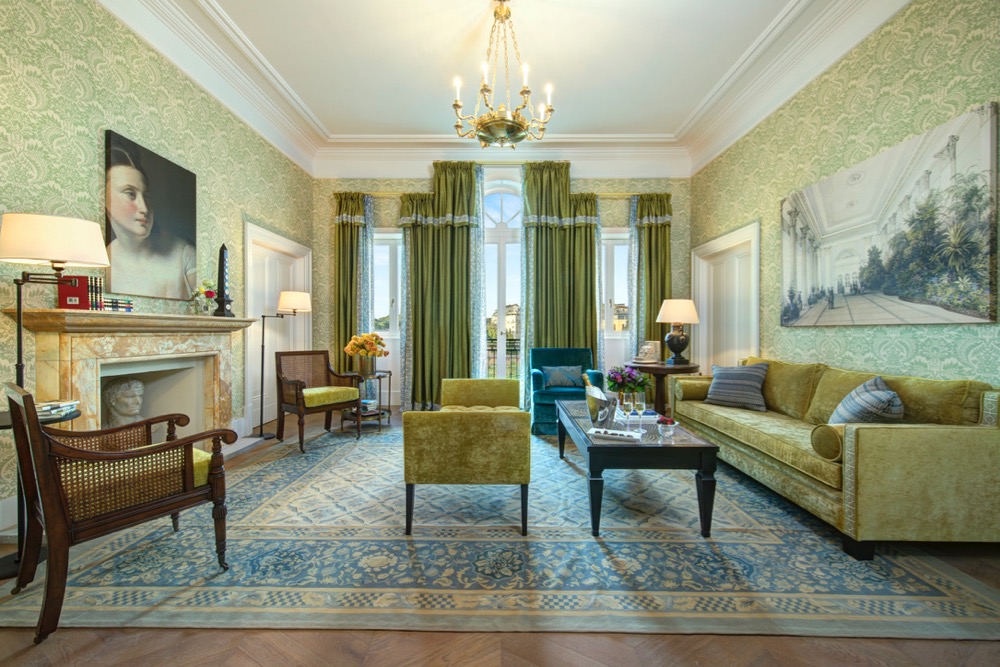
Familiar elements of the Grand Tour are also present in the suite’s Studio Library, with ancient Hellenic geometric graphics on the curtains and room fixtures, alongside ceramic vases and brass accents.
Two private terraces with far-reaching views of Rome envelop the Suite de la Ville, and a private elevator and staircase also give access to the suite below, allowing guests to join the two floors to create a ‘delegation suite’.

